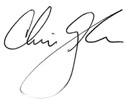In the protean world of medical technology, there are few areas of greater and more rapid flux than mobile technology. Reflective of the society at large, physicians, especially younger ones, are in thrall to their handheld devices for both personal and, increasingly, clinical uses.
As often happens at the leading edge of any developing story, it can be difficult to be sure what’s real, what’s hype, and when and how you need to actually adapt your thinking or your routines to assure that you’re up with the times.
I thought it was notable that the venerable Journal of the American Medical Association recently announced a new feature: QR codes that allow readers using handheld devices to go from specific articles in the publication to videos and other complementary content online. Great idea. But that same week saw a CNN report on QR codes citing a survey of college students, the demographic you’d most expect to be in tune with new technology. While 80 percent of respondents owned a smartphone and recognized a QR code, just 20 percent knew how to navigate one; and 75 percent felt they’d be unlikely to use one in the future.
Ophthalmologists have a longstanding reputation not just for embracing but driving development of new technology. At the iTunes store alone, there are already more than 80 apps specific to ophthalmology, and there will probably be more by the time I finish this column. It’s probably safe to speculate that ophthalmologists as a group are ahead of the curve in terms of adoption of this technology.
While the National Transportation Safety Board made the top of the news this month by proposing a ban on handheld devices while driving, a New York Times article got less attention but might be more instructive to physicians incorporating these devices into practice.
It’s an old lesson but worth repeating as any new technology emerges. There is nothing inherently good or bad about new tech; it depends on how it’s used.
The Times article makes the point that beepers, phones and multitasking have long been part of medical practice. The difference today is a matter of degree and the level to which younger doctors grew up accustomed to being constantly connected and doing too many things at the same time. It details some scary trends including a rise in texting and shopping (!) in the OR and other distractions by surgical staff and even surgeons.
The Times has to sell papers, so what you choose to believe is your call. But there is a valuable lesson in the article and it’s a simple one: Is your new tool enhancing or hindering your interaction with your patient?
 |



